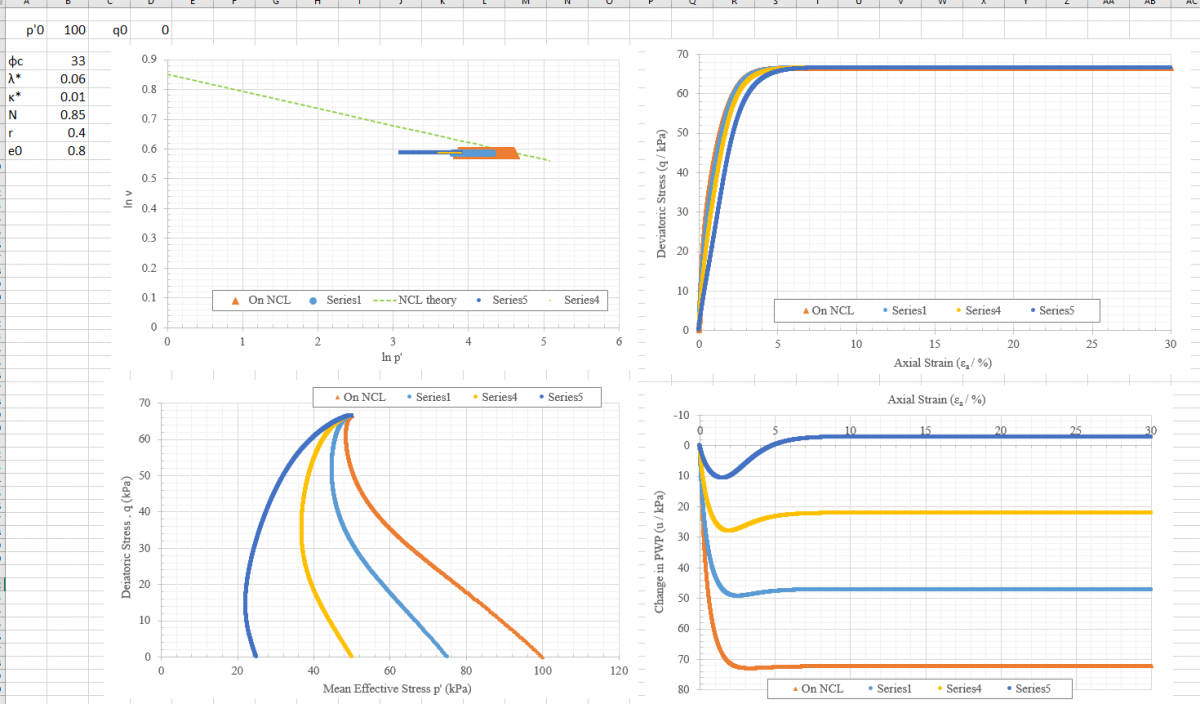

- TRIAXIAL TEST PLAXIS 2D PDF MANUAL
- TRIAXIAL TEST PLAXIS 2D PDF SOFTWARE
- TRIAXIAL TEST PLAXIS 2D PDF CODE
- TRIAXIAL TEST PLAXIS 2D PDF SERIES

Input parameters have been chosen based on laboratory and in situ experiments and verified by back calculation of undrained triaxial tests and CRS tests.
TRIAXIAL TEST PLAXIS 2D PDF CODE
Thus, only results obtained with the Soft Soil Creep model implemented in the finite element code Plaxis are presented.

after embankment construction, have been considered in addition to long term consolidation and creep settlements only long term displacements are dealt with in this paper. Although different constitutive models have been employed in the class A prediction where short term displacements, i.e. In addition class C predictions are included and the changes in input parameters for the finite element model are discussed. Additionally some attention is given to the importance of undrained behaviour.The paper summarises key results of a class A prediction obtained from 2D and 3D finite element analyses performed for the Embankment Prediction Symposium 2016.
TRIAXIAL TEST PLAXIS 2D PDF MANUAL
To learn more, view our, PLAXIS 2D Tutorial Manual CONNECT Edition V20, PLAXIS 3D Tutorial Manual CONNECT Edition V20, PLAXIS 2D Reference Manual CONNECT Edition V20. In Session 4 we will look into obtaining parameters for clay materials from oedometer and triaxial tests to be used in the Hardening Soil model. The various lessons deal with a range of interesting practical applications and cover next. PLAXIS 2D Soil Parameters-Parameters for Clay The Hardening Soil model is introduced and it is explained how the parameter for this model can be obtained specifically for sands from laboratory tests. In Session 3 we shift our focus from PLAXIS modelling to obtaining correct soil parameters.

PLAXIS 2D Soil Parameters-Parameters for Sand The latter is important to make sure that your project starts from the correct initial stress state In Session 2 we will focus on generating the best possible mesh and also look into the generation of initial stresses. Introduction to PLAXIS 2D-Initial Stresses and Groundwater At the end of the session we will look into the use of structural elements. Participants will learn the possibilities of creating a model and defining the construction process. Session 1 gives an overview of the functionality in PLAXIS. Stefanos Papavasileiou | Manager Technical Support | Geotechnical Soil is a complex multiphase material its stress, strain and strength are represented by pressure dependency with coupling between shear and volumetric behavior. | Manager Content Development | Geotechnical | Manager User Success | Geotechnicalĭennis Waterman, MSc. Introduction to PLAXIS 2D-Concepts and Structural Elements If you have questions, please contact us. Please use the links below to register for each module you would like to attend.
TRIAXIAL TEST PLAXIS 2D PDF SERIES
This ACCELERATE Virtual Series is offered complimentary (no fee) to all attendees. Mechanical damage of an anisotropic porous rock in cyclic triaxial tests.
TRIAXIAL TEST PLAXIS 2D PDF SOFTWARE
A basic working knowledge of PLAXIS 2D software is required to maximize learning of Soil Parameters (Module 2). However, moments (absolute value) are more important with the PLAXIS model.


 0 kommentar(er)
0 kommentar(er)
